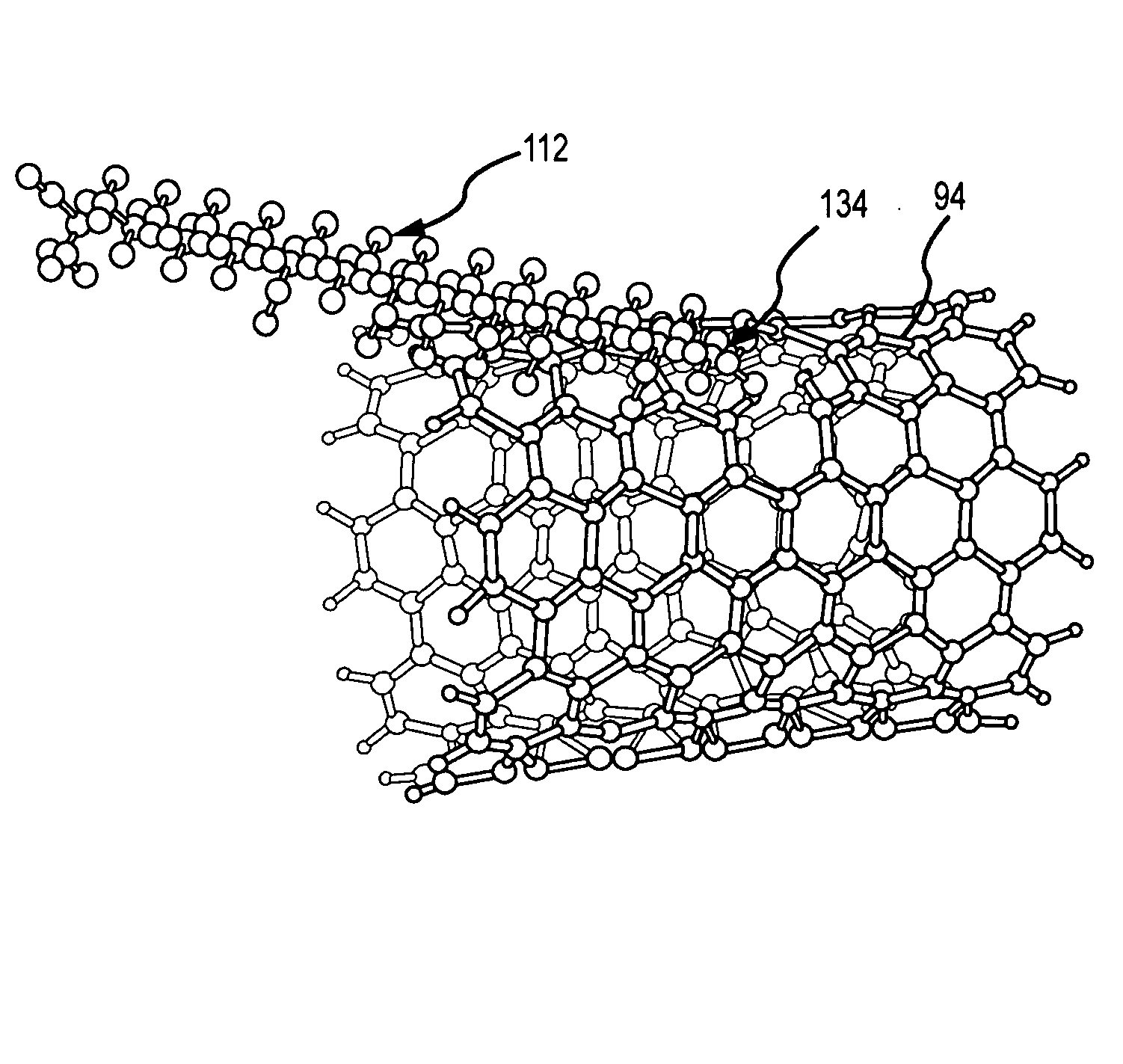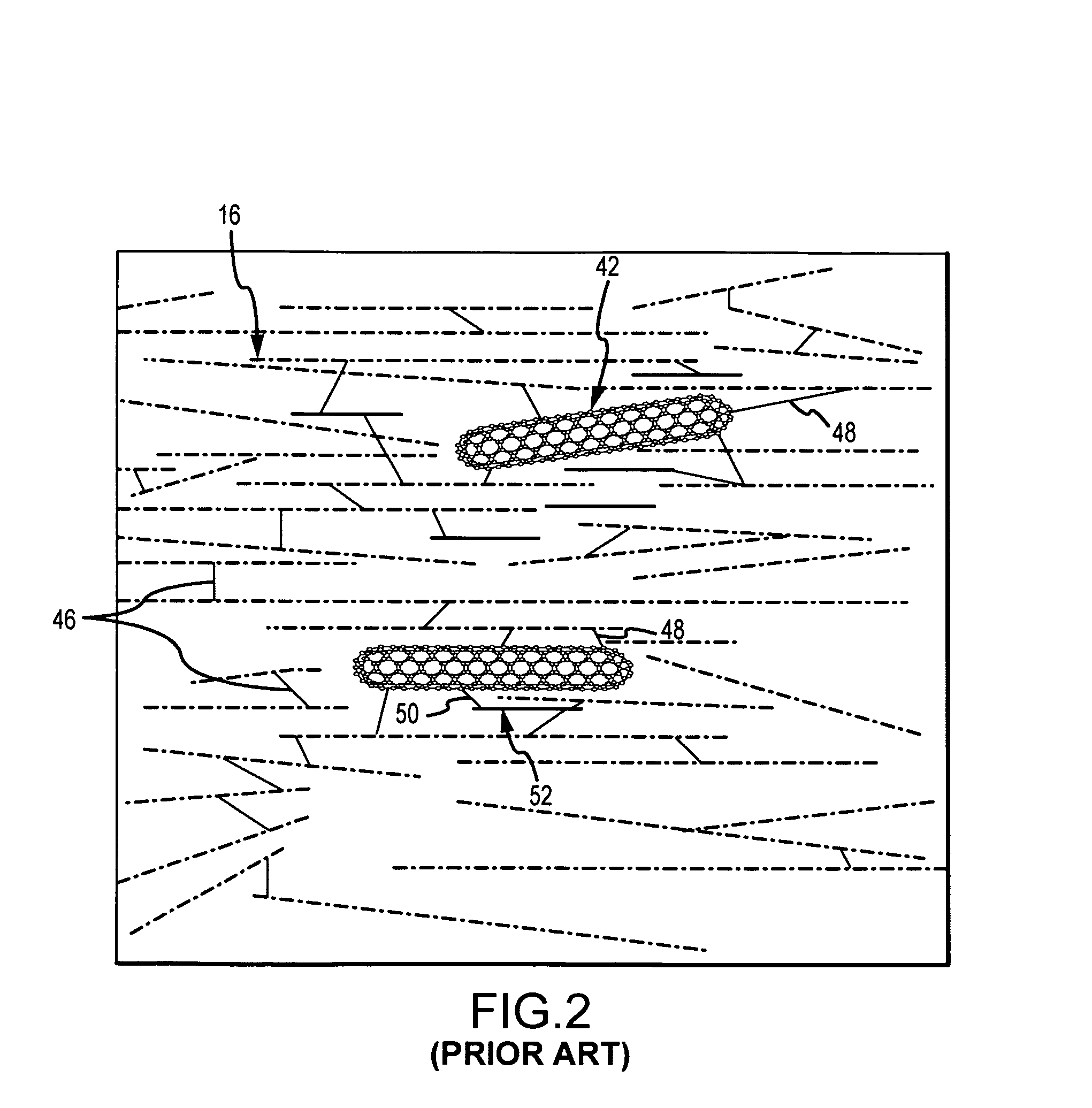Reinforced filament with doubly-embedded nanotubes and method of manufacture
a nanotube and reinforced filament technology, applied in the field of polymer-based filaments and fibers and methods of reinforcement using nanotubes, can solve the problems of limited number of actual bonds to cnts, poor bonding of cnts, and limit the increase in mechanical strength of the resulting carbon fibers, so as to achieve the effect of increasing mechanical strength
- Summary
- Abstract
- Description
- Claims
- Application Information
AI Technical Summary
Benefits of technology
Problems solved by technology
Method used
Image
Examples
Embodiment Construction
[0018]The present invention provides for reinforced filaments and macro fibers with doubly-embedded nanotubes and method of manufacture that increases mechanical strength. This approach is particularly well-suited for reinforcing carbon fiber formed from a monomer having a carbon-carbon backbone with carbon nanotubes. However, the approach is generally applicable to carbon-carbon, carbon-based and non-carbon monomers for creating the polymer filament. A monomer (from Greek mono “one” and meros “part”) is a small molecule that may become chemically bonded to other monomers to form a polymer. The most common carbon-carbon monomer for the production of macro carbon fiber is acrylonitrile. Other carbon-carbon monomers include olefins e.g. ethylene and propylene. Examples of carbon-based monomers include carbonate, ethersulfone, imide, phenyloxide, phenylene Sulfide, two separate monomers for Nylon and three separate monomers for ABS. An example of a non-carbon monomer is silicones that ...
PUM
| Property | Measurement | Unit |
|---|---|---|
| diameter | aaaaa | aaaaa |
| dissolving | aaaaa | aaaaa |
| Van der Waals forces | aaaaa | aaaaa |
Abstract
Description
Claims
Application Information
 Login to View More
Login to View More - Generate Ideas
- Intellectual Property
- Life Sciences
- Materials
- Tech Scout
- Unparalleled Data Quality
- Higher Quality Content
- 60% Fewer Hallucinations
Browse by: Latest US Patents, China's latest patents, Technical Efficacy Thesaurus, Application Domain, Technology Topic, Popular Technical Reports.
© 2025 PatSnap. All rights reserved.Legal|Privacy policy|Modern Slavery Act Transparency Statement|Sitemap|About US| Contact US: help@patsnap.com



